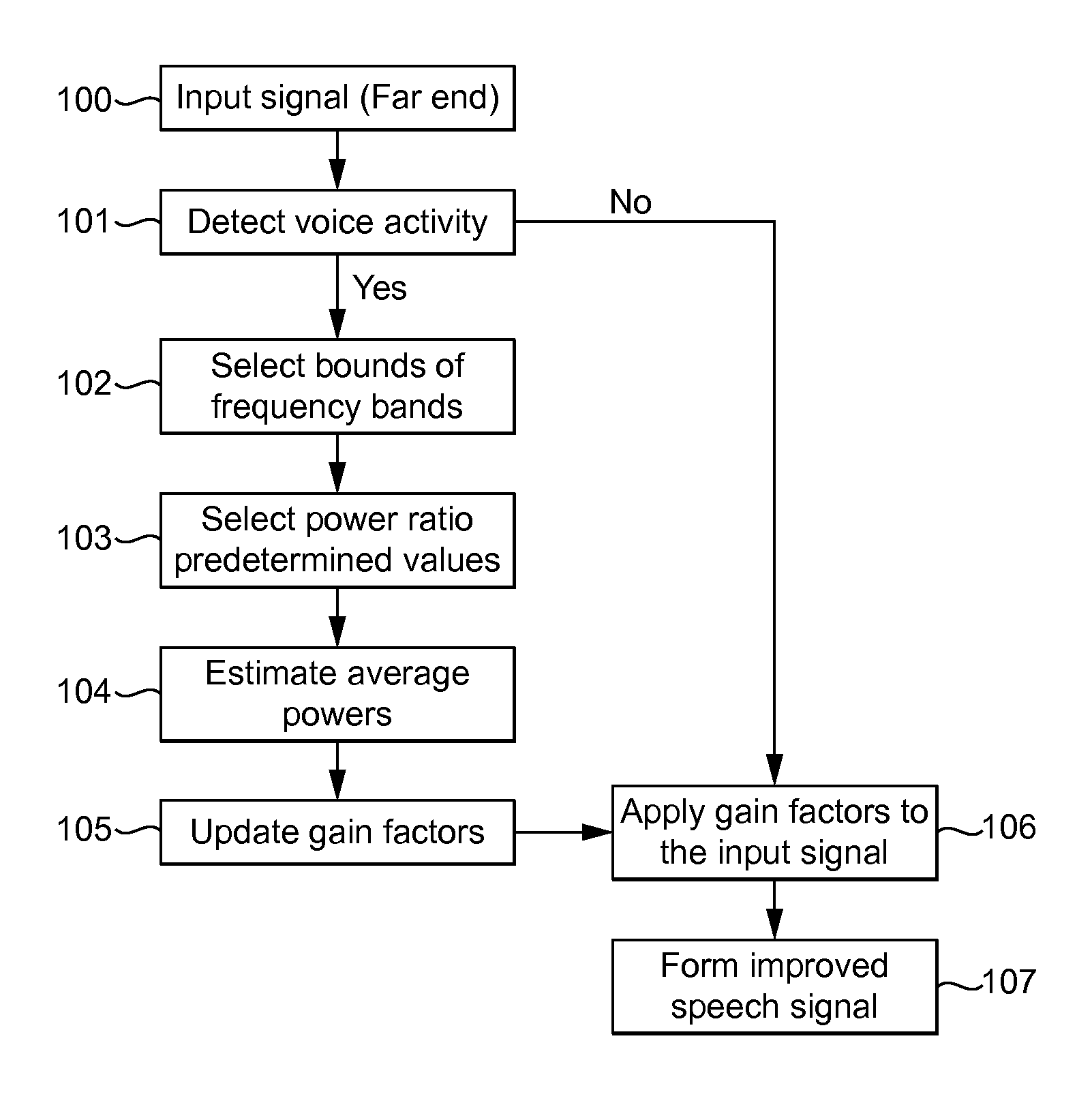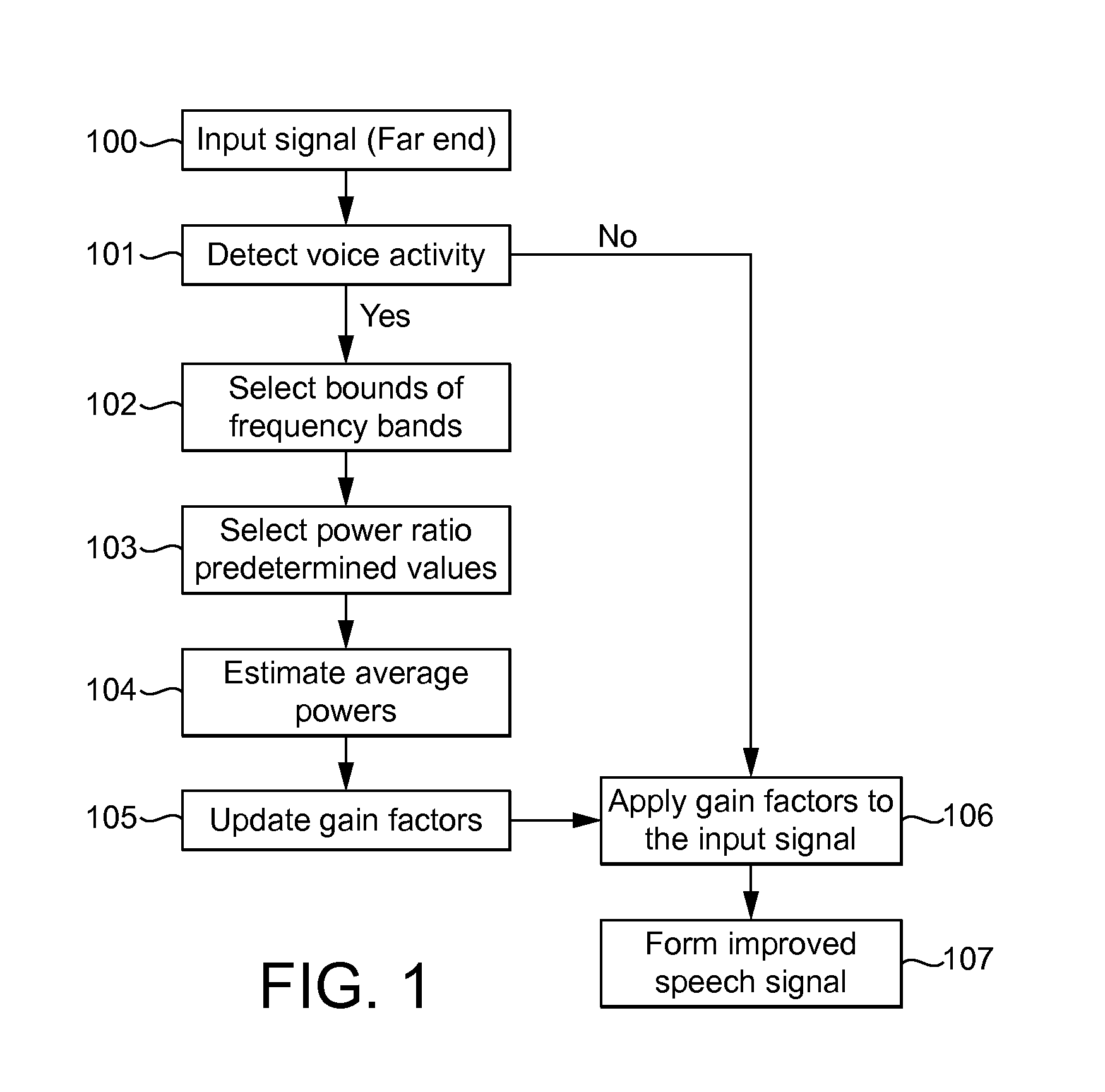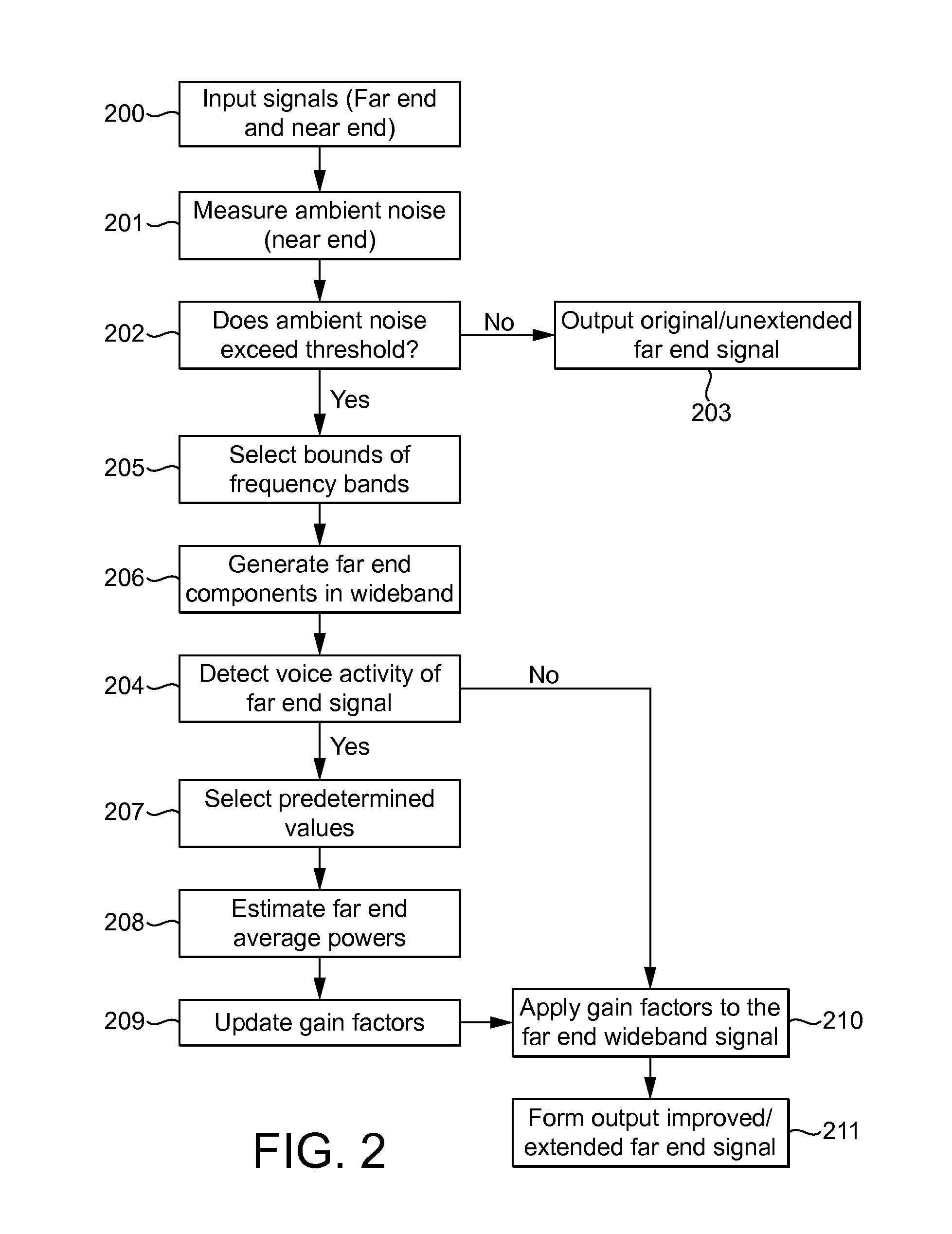Speech intelligibility
a speech signal and intelligibility technology, applied in the field of speech intelligibility, can solve the problems of less attention to the problem of near-end ambient noise, poor listening experience, and adverse ambient noise conditions in mobile communications, and achieve the effect of improving the perceived quality of a narrowband speech signal
- Summary
- Abstract
- Description
- Claims
- Application Information
AI Technical Summary
Benefits of technology
Problems solved by technology
Method used
Image
Examples
Embodiment Construction
[0036]The following describes three methods performed by an apparatus configured to process and output speech signals. Suitably, the apparatus is part of a user apparatus. Typically, the user apparatus is configured to receive telecommunications signals from another device, and the signals referred to in the following may be such received signals. These signals consequently suffer from the adverse effects of the telecommunications channel, and the ambient noise at both ends of the channel as previously discussed. The described methods are suitable for implementation in real-time.
[0037]The first method relates to equalisation of frequency bands of a narrowband signal, the second method relates to extending the bandwidth of a narrowband signal to a wideband signal, and the third method relates to tuning the apparatus in dependence on the near-end ambient noise.
[0038]In operation, signals are processed by the apparatus described in discrete temporal parts. The following description ref...
PUM
 Login to View More
Login to View More Abstract
Description
Claims
Application Information
 Login to View More
Login to View More - R&D
- Intellectual Property
- Life Sciences
- Materials
- Tech Scout
- Unparalleled Data Quality
- Higher Quality Content
- 60% Fewer Hallucinations
Browse by: Latest US Patents, China's latest patents, Technical Efficacy Thesaurus, Application Domain, Technology Topic, Popular Technical Reports.
© 2025 PatSnap. All rights reserved.Legal|Privacy policy|Modern Slavery Act Transparency Statement|Sitemap|About US| Contact US: help@patsnap.com



